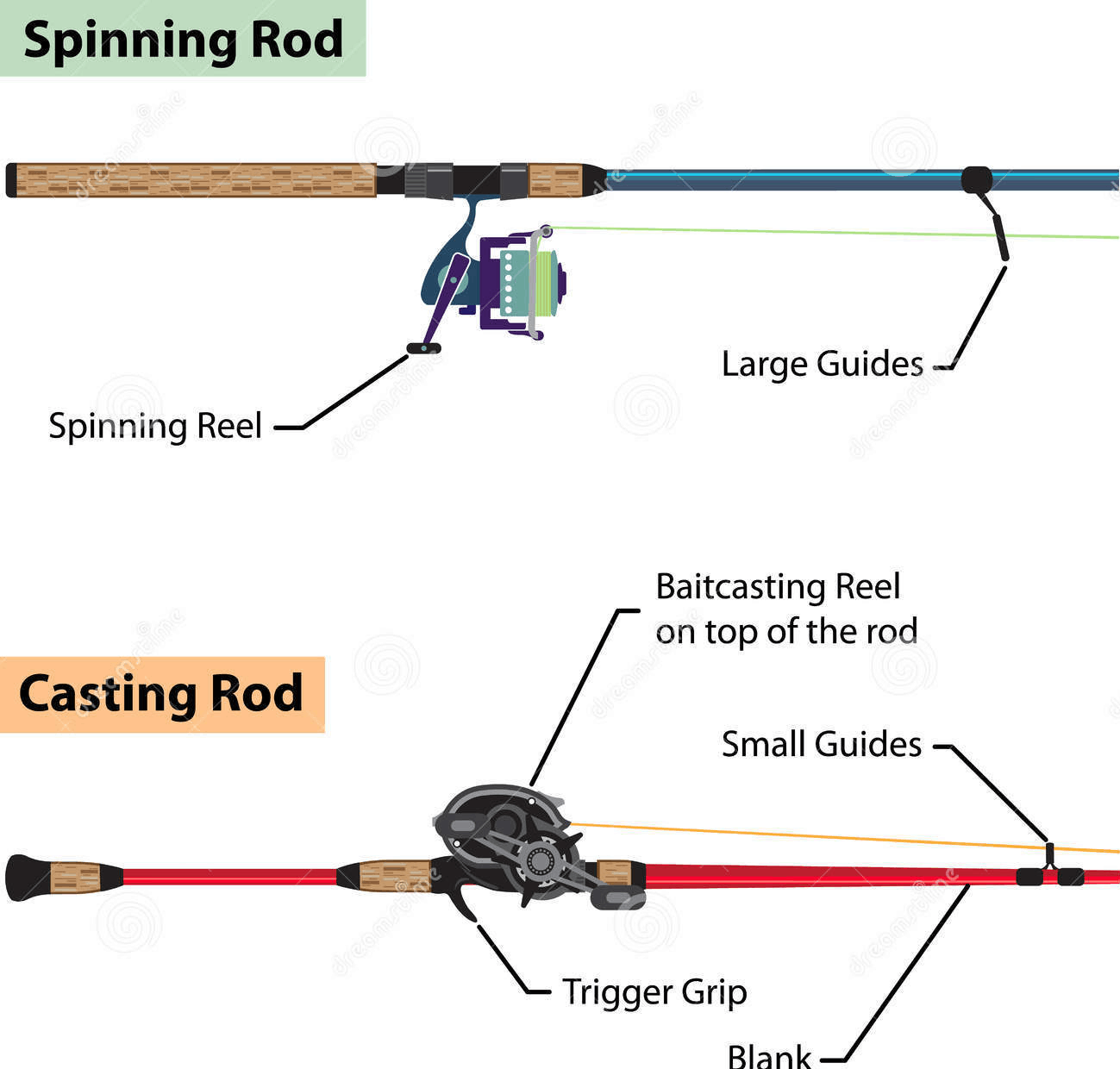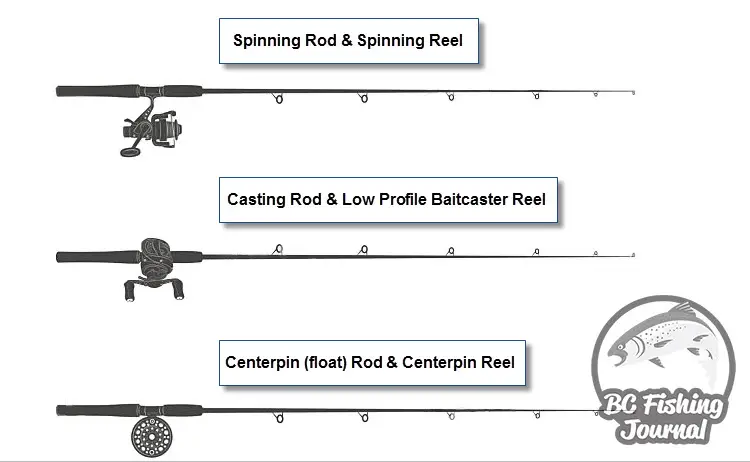Fishing is a beloved pastime for many people around the world. Whether you enjoy the peacefulness of casting a line in a quiet lake or the thrill of reeling in a big catch out at sea, having the right equipment is crucial for success. One of the most important pieces of equipment in any angler’s arsenal is the fishing rod, and there are many different types to choose from. One of the most popular styles is the spinning rod, which boasts a unique design that sets it apart from other types of rods. In this article, we will explore what makes a spinning rod different and why it might be the right choice for your next fishing trip.
Unlike traditional casting rods, spinning rods feature a spool that allows the line to come off at a perpendicular angle to the rod. This allows for greater accuracy and distance when casting, making it easier to target specific areas of the water with your bait or lure. Additionally, spinning rods are typically lighter and more flexible than other types of rods, which can make them easier to handle and more comfortable to use for extended periods of time. Whether you’re a seasoned angler or just starting out, understanding the unique advantages of a spinning rod can help you make an informed decision when it comes to choosing the right equipment for your next fishing trip.

What Makes a Spinning Rod Different?
Spinning rods are one of the most popular types of fishing rods used by anglers worldwide. But what exactly makes a spinning rod different from other types of fishing rods? In this article, we’ll take a closer look at the unique features and benefits of a spinning rod that set it apart from other types of rods.
1. Reel Placement
The most noticeable difference between a spinning rod and other types of rods is the placement of the reel. Unlike baitcasting and fly fishing rods, which have the reel mounted on top of the rod, spinning rods have the reel mounted on the underside of the rod. This placement makes a spinning rod easier to cast and more comfortable to hold for extended periods.
In addition, the reel on a spinning rod is fixed, which means it doesn’t rotate during casting. This feature makes it easier to cast lightweight lures and baits with greater accuracy and distance.
2. Line Guides
Another key feature of a spinning rod is the line guides. Spinning rods have smaller guides compared to baitcasting and fly fishing rods, which helps reduce friction and allows the line to flow smoothly through the guides. This feature is especially important when using lighter lines, as it helps prevent line tangles and improves casting distance.
3. Power and Action
The power and action of a spinning rod refer to its ability to bend and respond to the weight of the fish. Spinning rods typically have a more flexible and responsive action compared to baitcasting rods, which makes them ideal for lighter fishing applications.
The power of a spinning rod refers to its ability to handle heavy fish. Spinning rods typically come in a range of power ratings, from ultralight to heavy, allowing anglers to choose the right rod for their specific fishing needs.
4. Versatility
One of the main advantages of a spinning rod is its versatility. Spinning rods can be used for a variety of fishing applications, from freshwater trout to saltwater game fish. They are also ideal for beginners and experienced anglers alike, making them a popular choice for anglers of all levels.
5. Ease of Use
Spinning rods are known for their ease of use, making them a popular choice for beginners. The fixed spool and smaller line guides make it easier to cast and retrieve, while the lighter weight and comfortable grip make it more comfortable to hold for extended periods.
6. Benefits of a Spinning Rod
There are many benefits to using a spinning rod for fishing. Some of the key benefits include:
– Versatility: Spinning rods can be used for a wide range of fishing applications, making them a versatile choice for anglers.
– Ease of use: Spinning rods are easy to use and comfortable to hold, making them a great choice for beginners.
– Accuracy: The fixed spool and smaller line guides make it easier to cast lightweight lures and baits with greater accuracy.
– Lightweight: Spinning rods are typically lighter than baitcasting and fly fishing rods, making them easier to handle and more comfortable to hold for extended periods.
7. Spinning Rods vs. Baitcasting Rods
While spinning rods are popular, they are not the only type of fishing rod available. Baitcasting rods are another popular choice, especially for experienced anglers. Here are some of the key differences between spinning rods and baitcasting rods:
– Reel placement: Baitcasting rods have the reel mounted on top of the rod, while spinning rods have the reel mounted on the underside of the rod.
– Line guides: Baitcasting rods have larger line guides compared to spinning rods, which can cause more friction and decrease casting distance.
– Power and action: Baitcasting rods typically have a stiffer action and a higher power rating compared to spinning rods, making them better suited for heavy fishing applications.
8. Spinning Rods vs. Fly Fishing Rods
Fly fishing rods are another popular type of fishing rod, especially for anglers who enjoy catching trout and other freshwater fish. Here are some of the key differences between spinning rods and fly fishing rods:
– Reel placement: Fly fishing rods have the reel mounted on top of the rod, while spinning rods have the reel mounted on the underside of the rod.
– Line guides: Fly fishing rods typically have larger line guides compared to spinning rods, which help to reduce friction and allow the line to flow smoothly through the guides.
– Casting technique: Fly fishing rods require a different casting technique compared to spinning rods, which can take some time to master.
9. Choosing the Right Spinning Rod
When choosing a spinning rod, there are several factors to consider, including:
– Power: Choose a power rating that is appropriate for the type of fish you will be targeting.
– Length: Longer rods generally provide greater casting distance, while shorter rods are more maneuverable.
– Action: Choose an action that is appropriate for the type of fishing you will be doing.
– Material: Spinning rods are typically made from graphite or fiberglass, each of which has its own strengths and weaknesses.
10. Conclusion
In conclusion, spinning rods are a popular choice among anglers for their ease of use, versatility, and accuracy. They are ideal for beginners and experienced anglers alike, and can be used for a wide range of fishing applications. When choosing a spinning rod, it’s important to consider factors such as power, length, action, and material to find the right rod for your specific fishing needs.
Frequently Asked Questions
Here are some commonly asked questions about spinning rods and their unique features:
What is a spinning rod, and how is it different from other fishing rods?
A spinning rod is a type of fishing rod that is designed for use with spinning reels. It is typically lighter and more flexible than other types of fishing rods, such as baitcasting rods. The spinning rod’s design allows it to be used for casting light lures and baits, making it a popular choice for freshwater and light saltwater fishing.
Unlike other types of fishing rods, the guides on a spinning rod face downwards, which reduces friction and allows the line to flow freely. This design also makes it easier to cast light lures and baits accurately, as the line is less likely to tangle or snag during the cast.
What materials are used to make spinning rods?
Spinning rods can be made from a variety of materials, including graphite, fiberglass, and composite materials. Graphite is a popular material for spinning rods because it is lightweight and sensitive, allowing anglers to feel even the slightest bites.
Fiberglass is a more durable material that is often used in heavier spinning rods designed for saltwater fishing. Composite materials, which combine graphite and fiberglass, can offer a balance of both sensitivity and strength.
How do I choose the right spinning rod for my needs?
When choosing a spinning rod, it is important to consider the species of fish you will be targeting, as well as the type of water you will be fishing in. Lighter spinning rods are typically best for freshwater fishing, while heavier spinning rods are better suited for saltwater fishing or larger fish species.
It is also important to consider the length and power of the spinning rod. Longer rods are generally better for casting longer distances, while shorter rods offer more precision and control. The power of the rod refers to its ability to handle heavier lures and fish; heavier power rods are better for larger fish species.
Can I use a spinning rod for other types of fishing?
While spinning rods are designed specifically for use with spinning reels, they can be used for a variety of fishing techniques. For example, a spinning rod can be used for fly fishing by attaching a fly reel to the rod’s handle.
Additionally, some anglers use spinning rods for baitcasting by attaching a baitcasting reel to the rod’s handle. However, it is important to note that spinning rods are not designed for use with heavy lures or baits, and may not be suitable for certain types of fishing.
How do I maintain my spinning rod?
To keep your spinning rod in good condition, it is important to clean it after each use. Use a soft cloth and warm water to wipe down the rod, paying special attention to the guides and reel seat.
It is also important to store your spinning rod properly by keeping it in a rod case or rack. Avoid storing your rod in high temperatures or direct sunlight, as this can cause damage to the rod’s materials. Finally, be sure to check your rod periodically for any signs of damage, such as cracks or worn guides, and address these issues promptly to prevent further damage.

Spinning Rod Vs Baitcasting Setup (Fishing Rod Basics)
As a professional writer, it’s fascinating to dive into the world of fishing and understand what makes a spinning rod different from other types of fishing rods. The answer lies in the design and mechanics of the rod. A spinning rod is designed to be lightweight and flexible, making it easier to cast and control the line. It has a reel that is fixed underneath the rod, making it easier to use with one hand. This design allows for more accuracy and precision when casting, making it a popular choice for anglers of all skill levels.
In conclusion, a spinning rod is an essential tool for any angler looking to improve their fishing skills. Its lightweight design, flexible nature, and fixed reel make it easier to cast and control the line. Whether you’re a beginner or an experienced angler, a spinning rod is a versatile and reliable option that can help you catch more fish and enjoy the sport of fishing to the fullest. So, next time you’re out on the water, consider using a spinning rod and experience the difference for yourself.
